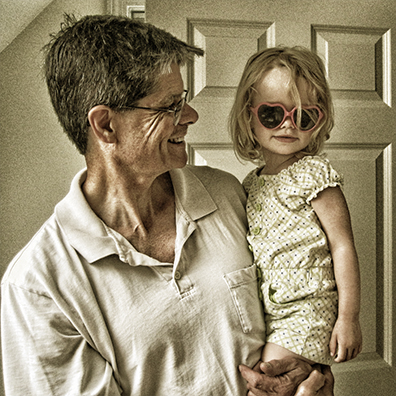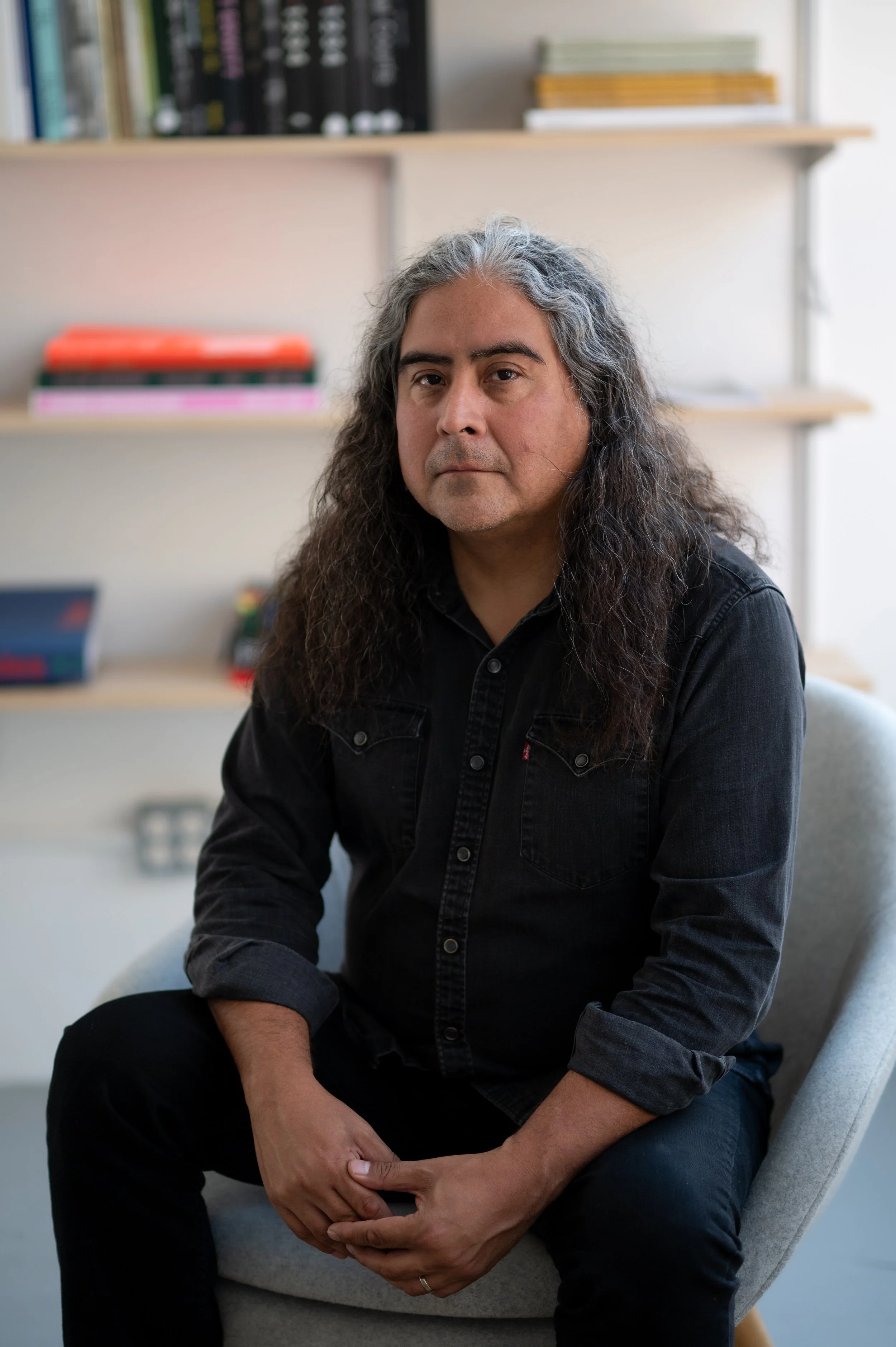Raven Chacon’s Music for Voice (2003), performed by members of Callithumpian Consort. From l: John Andress, Lilit Hartunian, Sam Kelder, Stephen Marotto. Andrew Baxter Cook photograph
A new exhibition at Boston’s Institute of Contemporary Art, An Indigenous Present, offers a generous survey of North American abstract artists. Organized by Choctaw artist Jeffrey Gibson and Jenelle Porter, An Indigenous Present has been curated with gentle didacticism. Hardly a definitive study, the works of the fifteen contemporary makers, most of them living, recur throughout a half-dozen galleries.
Extra attention is given to the earliest contributors, George Morrison (Ojibwe, 1919–2000) and Mary Sully (Yankton Dakota, 1896–1963). Caroline Monnet, Kay WalkingStick, Jaune Quick-to-See Smith, Kimowan Metchewais and others all make multiple contributions. Although Gibson is one of the most frequently exhibited Indigenous artists working today, he does not include his own work. An Indigenous Present travels subsequently to Nashville and Seattle.
Composer Raven Chacon is among the artists, ensuring that noise gets embraced as an abstract practice. Chacon accepts many descriptors: visual artist, sound artist, performance artist, composer. His works in the exhibition include two graphic scores, Compass and American Ledger #1, and a sonic installation mimicking a flag waving and flapping (sounds Chacon created and recorded, shaking out a blanket).
Chacon also presented a full day’s worth of performances during the exhibition’s opening weekend, with a dozen compositions realized in the galleries, café, elevators, lobbies, and outdoors in the ICA’s waterfront neighborhood on Oct. 11.
Chacon (Diné, b. 1977) has a Pulitzer Prize (2022, for Voiceless Mass), and a 2023 MacArthur Fellowship, among numerous other awards and grants. He presents most often in avant settings: contemporary art spaces, electronic music festivals, site-specific installations. He frequently collaborates, including a decades-long relationship with the artist collective Postcommodity.
The Pulitzer-winning Voiceless Mass outlines Chacon’s aesthetic succinctly: set for pipe organ and chamber ensemble, his Mass has no singers. Their voices have been displaced, and thus cannot sound, and the sparse instrumentation (for a Mass, at least) reflects their absence. Other works also avail themselves of extra-musical ideas; the United States flag finds its potent symbolism in many of Chacon’s scores (including his American Ledger series).
Raven Chacon, 2023. Courtesy MacArthur Foundation
Chacon allows for circumstance. Suggesting that performers focus on their environment, he might have them locate the direction of the wind, or take clues from nearby flora and fauna. He welcomes random environmental sounds, allowing proximity to add meaning: Neighborhood foghorns and industrial elevators added accents and rhythm to the formless structures of Vertical Neighbors, which two pair of horns performed outside and above the museum entrance.
Some scores present a one-page set of of graphic instructions, usually circular, including some traditional notation, like Compass for electric guitar. The performers are guided by circumstances of the moment.
Some works are sonic novelties, like Report, set for various caliber weapons (obviously not performed in Boston’s crowded Seaport); or While Contemplating Their Fate in the Stars, The Twins Surround the Enemy, set ingeniously for two caged finches, who activate an adjoining theremin with their movements. These works nourish both the notion that noise, all noise, has musical possibilities, but also the suggestion that intending to shape performances also limits the performance. Or its possibilities.
Cellist Rhonda Rider (Invisible Arc) and double bassist Ross Wightman (Díí’ts’ïadah) played solo scores dedicated to them. Both works proceed uncertainly, traversing notated music, gestural allusions and extended techniques. Chacon makes the most of circular bowing, which adds a haziness to the pitch-making.
Soprano Aliana de la Guardia interpreted an early work—Ella Llora, from 2002. Chacon used a found cassette for the score, of a sobbing woman’s painful courtroom testimony. He transcribed the crying, focused predominantly on the singer’s breathing. The effect was paralyzingly intense.
Between its visual intrigue and sonic investigations, Chacon’s work comes particularly alive in a museum setting. Lacking traditional audience/performer manners and spaces, both listener and performers become observers. Observers, as Chacon would have them be, of the surroundings, including the past and the present.
An Indigenous Present runs through March 8 at Boston’s Institute of Contemporary Art. The exhibition travels to the Frist Art Museum in Nashville (June–Sept. 2026) and Frye Art Museum in Seattle (Nov. 2026–Feb. 2027).



